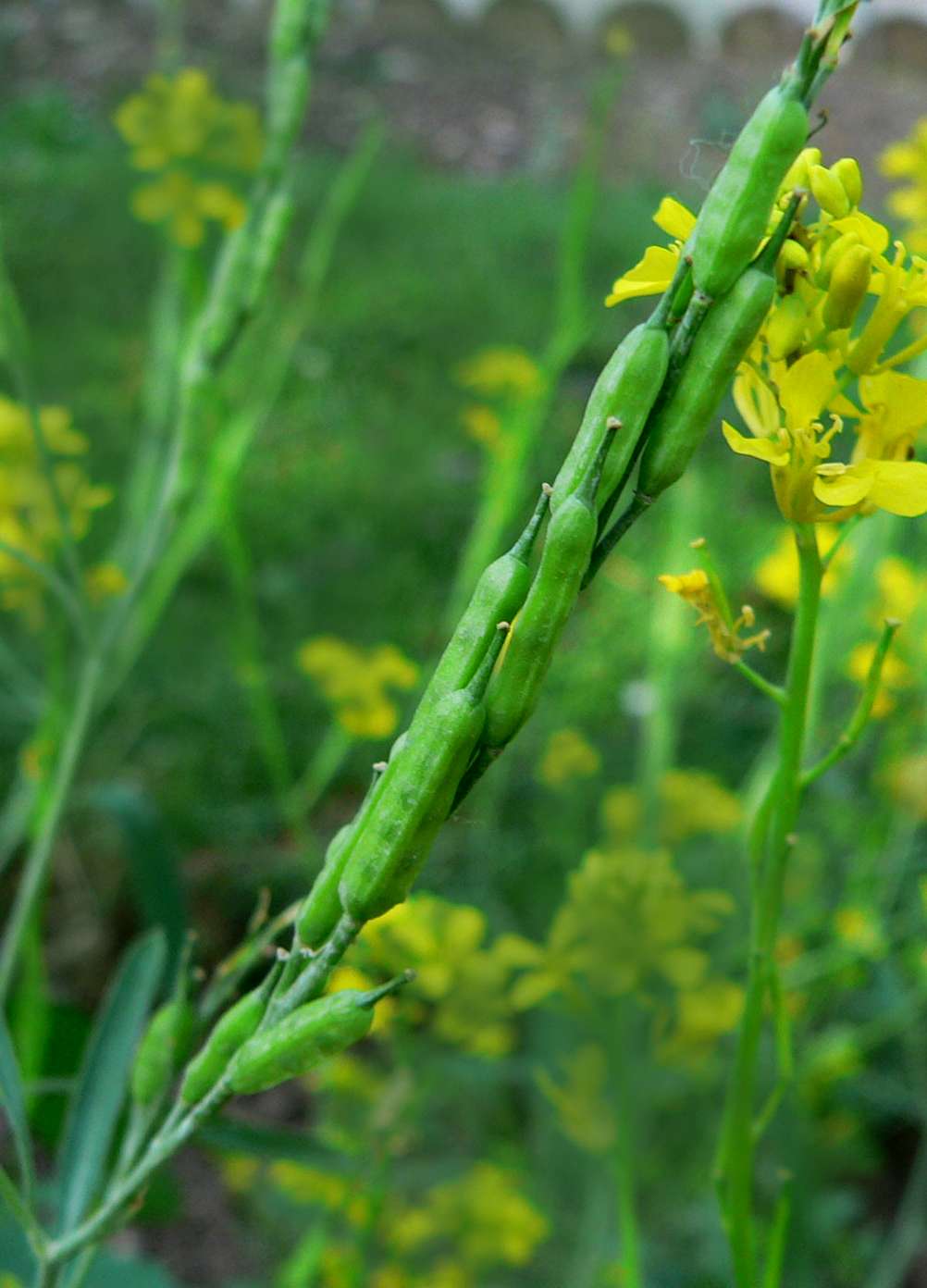Description
Mustard seeds, either whole or grounded, are used in culinary preparations. Young mustard shoots cut two or three weeks after sowing, used as an ingredient of the traditional British salad, mustard and cress. Mustard plants have glossy, dark green leaves and small yellow flowers.
Planting requirements
Planting season: April to May and October to November
Planting conditions:
| Propagation | Seeds |
|---|---|
| Planting method | Sow the seeds thinly in rows of two feet (60 cm) apart. For better germination, soak seeds overnight before planting |
| Soil | Requires a well fertile, well-drained, lightly textured sandy loam soil with a pH no less than 6. Good soil fertility is essential for obtaining good yield. Add compost or cattle manure during soil preparation, ensuring the soil has adequate organic matter |
| Water | Soil requires enough water for seeds to germinate. Supply water at 5-7 days interval during first 4 weeks of planting and then water at least 10-14 days interval until seeds mature. Keep the soil consistently moist but not waterlogged |
| Light | Full sunshine to partial shade. If the climate is too hot, may need shade covers to protect the plant. Mustard plants require at least 6 hours of sunlight daily |
Growing conditions:
| Temperatures | Soil temperatures between 10 and 35°C (50°F and 95°F) |
|---|---|
| Soil | Organic fertilizers are very important. Apply well decomposed compost or cattle manure soil preparation. Apply another round 3 weeks after planting. Organic mulches help maintain moisture, suppress weeds, and boost soil fertility |
| Water | Adjust watering frequency based on rainfall and weather conditions. Water deeply once a week, ensuring the top inch of soil is dry between waterings |
| Pruning | Prune plants if they become leggy or to encourage bushier growth. |
| Weed control | Remove weeds and maintain a clean field. Weed management is easier when row seeding is practiced |
Harvesting
Pod harvesting is done manually several times since pod maturity is staggered. Pull the plants out of the ground before the pods are fully ripened, when they are a yellow-brown color. Harvest leaves when they are young and tender, about 6-8 weeks after planting. Harvest seeds once they turn yellow and the pods begin to dry.
Curing
After harvesting, spread the plants in a well-ventilated area to dry for about two weeks. This helps to reduce moisture content and prevents mold growth.
Storage
Store dried mustard seeds in an airtight container in a cool, dark place. They can last up to 5 years if stored properly. For leaves, store them in the refrigerator for up to one week.
Protecting your plants
Pest control
Pest type:
- Mustard Aphid (Lipaphis erysimi)
- Painted Bug (Bagrada hilaris)
- Hairy Caterpillar
Symptoms:
- Mustard Aphid: Stunted growth and reduced pod formation due to sap-sucking.
- Painted Bug: Wilting and drying of plants due to sap-sucking.
- Hairy Caterpillar: Young larvae feed on leaves, leading to complete destruction.
Control method:
- Mustard Aphid: Timely sowing and use of pesticides like Thiamethoxam or Chlorpyrifos.
- Painted Bug: Irrigation after sowing; application of Malathion if necessary.
- Hairy Caterpillar: Apply insecticides like Malathion or Dichlorvos if infestations are observed.
Disease Control
Disease type:
- Alternaria Blight (Alternaria brassicae)
- White Rust (Albugo candida)
- Downy Mildew (Hyaloperonospora parasitica)
- Sclerotinia Rot (Sclerotinia sclerotiorum)
Symptoms:
- Alternaria Blight: Dark brown spots on leaves and pods; severe cases lead to wilting.
- White Rust: White pustules on leaves and stems; swelling of affected parts.
- Downy Mildew: Whitish growth on leaf undersides; yellowing of upper surfaces.
- Sclerotinia Rot: Elongated brown lesions on stems; can lead to complete crop failure if not managed early.
Management:
- Alternaria Blight: Use resistant varieties and apply fungicides like Indofil M-45 or Captan.
- White Rust: Application of Metalaxyl + Mancozeb or Copper oxychloride.
- Downy Mildew: Destroy debris before sowing and apply fungicides like Indofil M-45 multiple times during the growing season.
- Sclerotinia Rot: Monitor environmental conditions closely; apply fungicide when flowering begins.
Sources
In addition to our General List of Sources (link), we used these specific references:
- https://doa.gov.lk/field-crops-mustard/
- https://plantpropagation.com/mustard/
- https://www.growveg.com/guides/how-to-grow-mustard
- https://www.almanac.com/plant/mustard
- https://plantvillage.psu.edu/topics/mustard/infos
- https://krishi.icar.gov.in/jspui/bitstream/123456789/41759/1/Book%20Chapter%20IPM%20Mustard%202020.pdf
- https://www.gcirc.org/fileadmin/documents/Bulletins/B25/B25_04Mustard_in.pdf
- https://www.grainews.ca/columns/weeds-disease-and-insects-in-mustard/
- Saharan, G. S., Naresh Mehta, N. M., & Sangwan, M. S. (2003). Nature and mechanism of resistance to Alternaria blight in rapeseed–mustard system.
